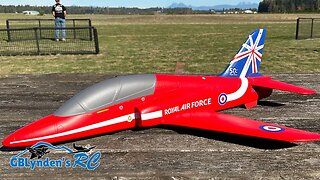Great Blue Heron Catches Fish in the Ocean on Protection Island in Nanaimo, BC
A Great Blue Heron Catches Fish in the Ocean on Protection Island in Nanaimo, BC in this entertaining video. Protection Island is a tiny island within the city of Nanaimo, British Columbia, Canada just off of Vancouver Island.
There is a huge Great Blue Heron colony that I will make another video of soon on this same island. The nesting structure is pretty amazing for the majestic yet funny looking bird that I caught fishing. This was some fun bird watching!
Here is some information about this bird:
The great blue heron (Ardea herodias) is a large wading bird in the heron family Ardeidae, common near the shores of open water and in wetlands over most of North America and Central America as well as the Caribbean and the Galápagos Islands. It is a rare vagrant to Europe, with records from Spain, the Azores, England and the Netherlands. An all-white population found only in the Caribbean and southern Florida was once treated as a separate species and known as the great white heron.
The great blue heron is replaced in the Old World by the very similar grey heron (Ardea cinerea), which differs in being somewhat smaller (90--98 cm (35--39 in)), with a pale gray neck and legs, lacking the browner colors that great blue heron has there. It forms a superspecies with this and also with the cocoi heron from South America, which differs in having more extensive black on the head, and a white breast and neck.
It is the largest North American heron and, among all extant herons, it is surpassed only by the Goliath heron (Ardea goliath) and the white-bellied heron (Ardea insignis). It has head-to-tail length of 91--137 cm (36--54 in), a wingspan of 167--201 cm (66--79 in), a height of 115--138 cm (45--54 in), and a weight of 2.1--3.6 kg (4.6--7.9 lb).[4][5][6] In British Columbia, adult males averaged 2.48 kg (5.5 lb) and adult females 2.11 kg (4.7 lb).[7] In Nova Scotia and New England, adult herons of both sexes averaged 2.23 kg (4.9 lb),[8] while in Oregon both sexes averaged 2.09 kg (4.6 lb)[9] Thus, great blue herons are roughly twice as heavy as great egrets (Ardea alba), although only slightly taller than them, but can themselves weigh about half as much as a large Goliath heron.[10] Notable features of great blue herons include slaty flight feathers, red-brown thighs, and a paired red-brown and black stripe up the flanks; the neck is rusty-gray, with black and white streaking down the front; the head is paler, with a nearly white face, and a pair of black plumes running from just above the eye to the back of the head. The feathers on the lower neck are long and plume-like; it also has plumes on the lower back at the start of the breeding season. The bill is dull yellowish, becoming orange briefly at the start of the breeding season, and the lower legs gray, also becoming orangey at the start of the breeding season. Immature birds are duller in color, with a dull blackish-gray crown, and the flank pattern only weakly defined; they have no plumes, and the bill is dull gray-yellow.[3][11][12] Among standard measurements, the wing chord is 43--49.2 cm (16.9--19.4 in), the tail is 15.2--19.5 cm (6.0--7.7 in), the culmen is 12.3--15.2 cm (4.8--6.0 in) and the tarsus is 15.7--21 cm (6.2--8.3 in).[13][14]
The heron stride is around 22 cm (8.7 in), almost in a straight line. Two of the three front toes are generally closer together. In a track the front toes as well as the back often show the small talons.[15]
The subspecies differ only slightly in size and plumage tone, with the exception of subspecies occidentalis, which as well as normal colored birds, also has a distinct white morph, known as the great white heron (not to be confused with the great egret, for which "great white heron" was once a common name). It is found only in south Florida and some parts of the Caribbean. The great white heron differs from other great blues in bill morphology, head plume length, and in having a total lack of pigment in its plumage. It averages somewhat larger than the sympatric race Ardea herodias wardi. This is mainly found near salt water, and was long thought to be a separate species. Birds intermediate between the normal morph and the white morph are known as Würdemann's heron; these birds resemble a "normal" great blue with a white head.
-
 3:28
3:28
GBLynden's RC
7 months ago4S Maiden | Arrows RC BAe Hawk 50mm EDF Jet
122 -
 LIVE
LIVE
Drunk3PO
7 hours agoThe Spectacular Failure of the Star Wars Hotel - REACTION
456 watching -
 1:30:11
1:30:11
Pepkilla
7 hours agopool streammmmmm
40.9K6 -
 20:43
20:43
Front & Center with Jacquie Jordan
1 day agoChina & Russia dropped the USA Dollar: Is Decentralized Digital Currency the Answer?
31.3K11 -
 58:14
58:14
The Why Files
1 day agoGöbekli Tepe and the Prophecy of Pillar 43 | Apocalypse and the Vulture Stone
75.1K132 -
 3:50:29
3:50:29
LumpyPotatoX2
12 hours agoFortnite at Rumble Creator House - #RumbleTakeover
47K10 -
 1:01:16
1:01:16
Trumpet Daily
1 day ago $3.22 earnedThe Trump Tide Is Rising Again - Trumpet Daily | May 24, 2024
33.5K17 -
 23:44
23:44
ErmzPlays
1 day ago $0.07 earnedFallout: Just Turn Your Brain Off
54.1K60 -
 24:23
24:23
Brewzle
1 day agoWe Found Awesome Craft Bottles Bourbon Hunting In Louisiana
58.3K27 -
 8:45
8:45
ThinkStory
1 day agoATLAS Ending Explained!
57.9K23